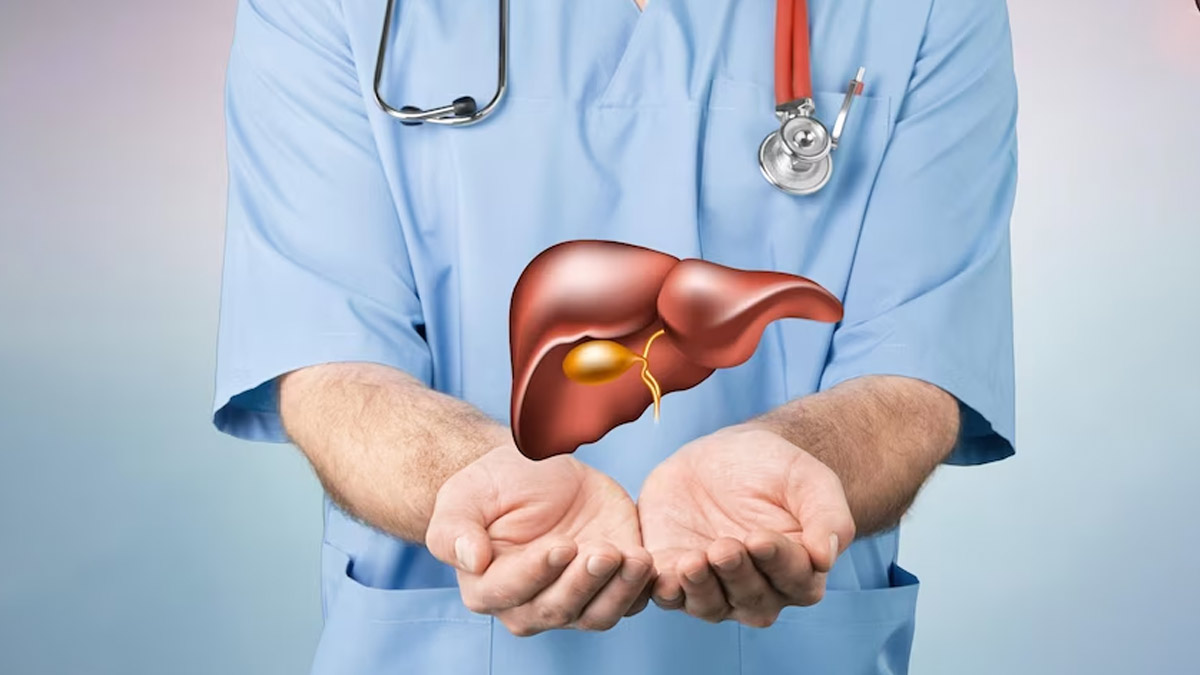
From detoxifying harmful substances to producing bile for digestion to metabolising nutrients, such as carbohydrates, fats, and proteins, the liver performs several functions. It is therefore important to protect the liver, which is also the largest internal organ in the human body. Failure to do that can either result in a fatty liver disease or liver cirrhosis, which is the scarring and damage of liver tissue, leading to impaired liver function. In an interaction with the OnlyMyHealth, Dr. Naresh Agarwal, Associate Director – Gastroenterology, Hepatology and Endoscopy, Max Super Speciality Hospital, Patparganj, discusses the ill-effects of liver cirrhosis and the immediate steps necessary to minimise the risk of liver failure.
Table of Content:-
Also Read: What Does A 'Silent Heart Attack' Feel Like: Warning Signs To Watch Out For
What Is Liver Cirrhosis?

“Cirrhosis of liver is an end stage liver disease characterised by severe irreversible fibrosis of liver and drastically reduced liver functions,” said Dr Agarwal. It can result from various causes, such as chronic hepatitis C or B, excessive alcohol consumption, non-alcoholic fatty liver disease (NAFLD), autoimmune diseases, or genetic disorders.
According to the Global Burden of Disease (GBD) Study 2017 published in the Lancet, 11.2 crore people were diagnosed with compensated cirrhosis. The same study highlighted that the condition caused more than 13.2 lakh deaths in females and 8.83 lakh deaths in males worldwide.
Cirrhosis can disrupt essential liver functions, potentially leading to complications like portal hypertension, jaundice, fluid retention, and an increased risk of liver cancer.
Who Is At Risk?
According to Dr Agarwal, an healthy diet, sedentary lifestyle, alcohol consumption, and pre-existing diseases like hepatitis B can increase one’s chances of liver cirrhosis, which is why the doctor recommends eating a balanced and hygienic diet, indulging in regular exercise to prevent obesity, avoiding alcohol, and vaccinating for hepatitis B virus.
Symptoms Of Liver Cirrhosis

Here are some key symptoms and signs of liver cirrhosis:
- Fatigue and weakness
- Yellowing of the skin and eyes due to the buildup of bilirubin, also called jaundice
- Abdominal swelling
- Easy bruising and bleeding
- Itchy skin
- Loss of appetite and weight loss
- Nausea and vomiting
- Changes in bowel movements
- Mental confusion and personality changes
- Redness of the palms of the hands
- Dark urine and pale stools
- Swollen legs and ankles
Also Read: Viral Versus Bacterial Infection: Why You Need To Know The Difference
Can Liver Cirrhosis Be Reversed?
While liver cirrhosis cannot be fully cured, its progression can be slowed, and complications can be managed with appropriate treatment and lifestyle changes. The primary goal of treatment is to prevent further liver damage and maintain liver function. According to Mayo Clinic, liver damage caused by cirrhosis generally can't be reversed. But if it is diagnosed early and the underlying cause is treated, further damage can be limited. In rare cases, it may be reversed, shares Mayo Clinic.
Immediate Steps To Take After A Cirrhosis Diagnosis

After receiving a diagnosis of liver cirrhosis, it's crucial to take some necessary steps to manage the condition and minimise further liver damage. Here are some important actions to consider:
Consult a specialist
Talk to a hepatologist or gastroenterologist who specialises in liver diseases. They will provide you with expert guidance, monitoring, and treatment options specific to your condition.
Follow medical advice
Comply with the treatment plan prescribed by your healthcare provider. This may include medications to manage symptoms, reduce complications, and slow down the progression of liver damage.
Lifestyle modifications
Adopt a healthy lifestyle to support liver health. This includes:
- Abstaining from alcohol completely
- Consuming a balanced diet rich in fruits, vegetables, lean proteins, and whole grains
- Maintaining a healthy weight, as obesity can worsen liver damage
- Engaging in moderate physical activity as recommended by your healthcare provider
- Ensuring you are up to date on vaccinations, particularly for hepatitis A and B, as these viral infections can further damage the liver
Bottomline
Liver cirrhosis is a complex and a dangerous condition, and treatment approaches may vary depending on the individual's specific circumstances. Work closely with a healthcare provider specialising in liver diseases to develop an individualised treatment plan and receive appropriate medical care.
Also watch this video
How we keep this article up to date:
We work with experts and keep a close eye on the latest in health and wellness. Whenever there is a new research or helpful information, we update our articles with accurate and useful advice.
Current Version